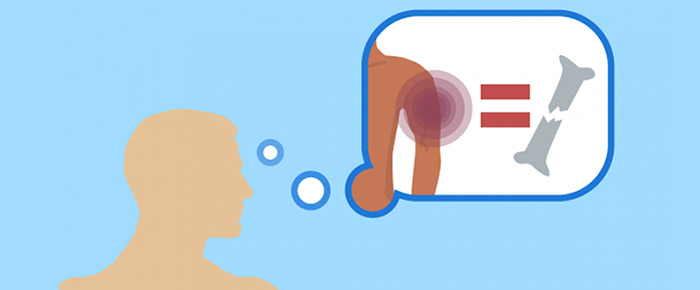Teaching Athletes About Pain

Why teach athletes about pain? I could respond by quoting studies on “reconceptualization” of pain – big fancy words to say people think differently about their pain. Some studies imply that we reduce fear and anxiety by teaching about pain. But for me, it’s a lot simpler: I want to change faulty beliefs.
Changing Beliefs About Pain
Science has come a long way in understanding how pain works, and that pain and tissues are two different issues. For example, people can feel pain without tissue injury, or have tissue issues (injury, degenerative changes, trauma) and… no pain. But many believe “Because I have pain, there must be something wrong (with my tissues).”
The Most Important Question
In the past 16 years, I’ve had the privilege to be trained and inspired by some of the leading minds in pain science. The neat part was that, after weekend seminars and travel, I would return to practice, see hundreds of complex pain patients and, through trial and error, figure out what worked for me and my patients in our clinical environment. The end result is quite simple. The MOST IMPORTANT question I ask EVERY patient is:
“What do you think is going on with your _______ (fill in the painful area)?”
The answers vary quite a bit, but the question aims at the heart of the issue – their beliefs. Nothing is as powerful as changing someone’s beliefs. All “miracle” cures I’ve seen have come from this. If we know what our athletes believe, we can determine if it’s correct or in need of change.
I would urge all athletic trainers to make this a “must ask” question, regardless where you practice and what type of athletes you see. Another good question for immediate insight into beliefs is: “What do you think should be done for your _______ (fill in the body part/issue)?”

